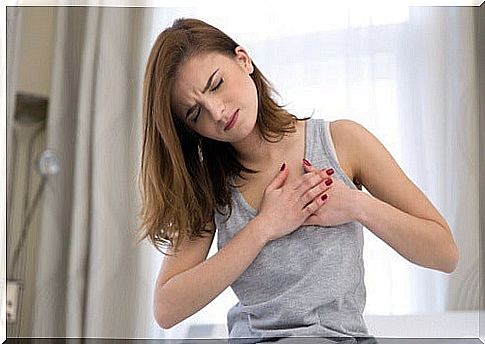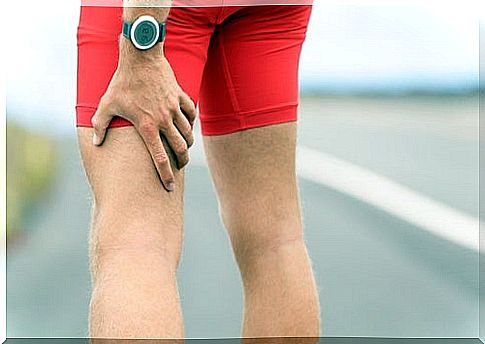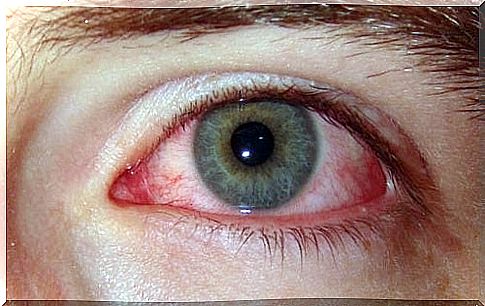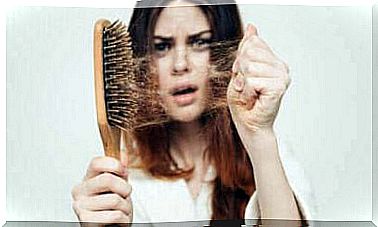10 Physical Signs Of Anxiety You Should Know About

Anxiety is a psychological disorder with an expected involuntary reaction to internal or external stimuli, such as thoughts or daily situations. There are several signs of anxiety.
It has to do with a group of physical and mental reactions that tend to occur when experiencing dangerous or stressful situations. However, it can also be due to hormonal changes.
It shows in different ways in each person. It all depends on one’s body and ability to deal with its emotions. Most cases are temporary. For some patients, however, it becomes a recurring and chronic problem.
The worst thing about it is that many ignore the fact that they are experiencing it and do not take the necessary precautions to put an end to its harmful effect.
Thus , it is very important to know the warning signs and keep an eye on them even if they seem normal.
In this article, we want to share the 10 main signs of anxiety and thus help you treat yourself before they become a serious problem.
Anxiety causes chest pain

Chest pain is very common among people with anxiety. Most of the time it is caused by muscle tension.
Sometimes the pain is so violent that it is confused with a heart attack. The main difference is that it is usually short-lived and does not lead to further complicated situations.
2. Feeling a lump in his throat or having trouble breathing
This sign of anxiety, known as “Globus pharyngeus”, is produced by the contraction of the muscles that sit inside the throat when anxiety or stress occurs.
Feeling a lump in the throat and having trouble swallowing food are clear signs of an emotional imbalance.
Excessive sweating as a sign of anxiety

Sweating is a normal reaction in the body. In fact, it is necessary to maintain body temperature at an appropriate level.
During periods of anxiety, however, the activity of the sweat glands is altered. As a consequence, excessive and abnormal amounts of sweat are produced.
4. Pain in neck and shoulders
Tensions in the muscles during bouts of anxiety tend to affect the most sensitive parts of the body directly, such as the neck and shoulders.
In fact , it is sometimes accompanied by unpleasant numbness in the face, which can last for a few minutes.
5. Digestive problems

The digestive system has a close connection to the emotional state of the body. Therefore, when we have an episode of anxiety, many problems with digestion can occur.
Lack of digestion, excessive production of stomach acid and constipation are conditions that affect people with anxiety.
6. Changes in one’s skin
Periods of anxiety also tend to affect the body on an aesthetic level as it causes significant changes on one’s skin.
Pimples, blemishes and dry skin are typical signs of anxiety when going through an emotional imbalance.
These changes are typically seen in the face. However, they can also appear on the arms, back and other parts of the body.
Either way, as soon as one’s anxiety is gone, the skin returns to its normal state.
7. A buzzing sensation

The feeling of weakness and a buzzing sensation in stressful situations is a reaction from the body created by stress and anxiety.
It is due to the accumulation of carbon dioxide in the blood inside the extremities that is produced by a reduced oxygenation process.
8. Insomnia
Insomnia and other sleep problems are one of the most disturbing and typical effects in those who suffer from anxiety.
Having trouble sleeping or staying asleep almost always has something to do with emotional issues that the person is going through.
What is worse is that as the days go by, other physical and mental side effects will appear. Thus, it also affects one’s daily quality of life.
9. Pain in the eyes

Anxiety tends to cause the decrease of some body fluids or the derailment of them to other body parts.
This causes a decrease in the natural lubrication that is in the eyes, which can cause red eyes, irritation and dryness.
10. Migraine
Violent headaches, such as migraines, are closely associated with periods of anxiety.
- Tensions and circulatory problems that come from anxiety are typically the cause of this problem.
Do you recognize any of these signs of anxiety? If so, you should rather start taking reservations to control your emotional imbalance.









